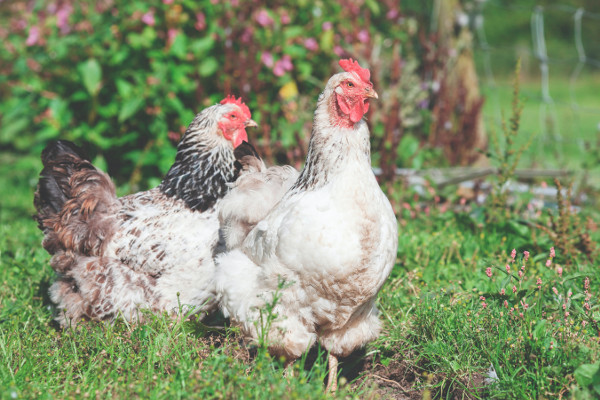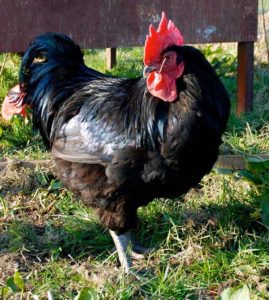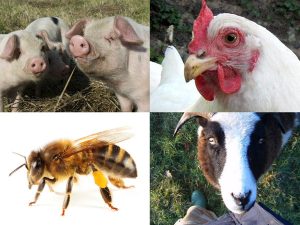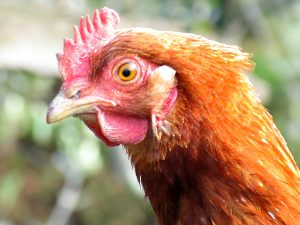Thinking about getting some chickens but not sure which breed to start with? Chris Lesley of Chickens And More shares her top tips for what to consider when choosing your backyard chicken.
For the many people launching themselves on their first adventure in keeping backyard chickens, one of the most difficult and important questions to answer is which breed of chicken to use to build their starter flock. With hundreds of chicken breeds to choose from, looking for a chicken breed can easily become overwhelming and confusing. Fortunately, first-timers actually only have a few things to take into account when choosing a breed, which should be a relief considering all the other choices a chicken keeper has to make.
Egg production
Perhaps the most obvious, and some would say most important, factor to consider when choosing a chicken breed is egg production – how many eggs the hens are likely to produce every week. This can range from two to six weekly, and while individual factors and the health of the hen will have an impact, breed is the best predictor for a chicken’s laying capacity. Breeds recommended for beginners – the Rhode Island Red and the Australorp, for example – are often high producers that average four or five eggs a week.
However, small families should keep in mind that a healthy flock should have at least three hens, which would mean twelve to fifteen eggs a week. While some food banks or shelters accept donations of home-raised eggs, and neighbors might be happy to take some off your hands, people who would drown in that many eggs should look for slightly lower-production breeds, like the Barnevelder or the Delaware, which average closer to three or four eggs a week.

Credit: Brina Blum on Unsplash
For people looking to max out on egg production, there’s also the option of hybrids, which were bred by the industry specifically to produce as many eggs as possible. Hybrid hens are often docile and adaptable, with the capacity to produce five or more eggs every week for the first 18 months or two years of their lives, after which production often declines dramatically. The downside with hybrids, though, is that this high production rate exhausts their bodies quickly, and they’re mostly short-lived – three to four years at most, where many traditional breeds can live five to 10 years in a healthy environment.
Purpose
While many backyard chicken keepers are only in it for the eggs, chickens are also meat birds, or they can be – not all chicken dinners are created equal, and owners interested in potentially eating their birds should take that into consideration when choosing a breed. Many breeds, especially heritage breeds, are dual-purpose birds, which means they’re both reliable layers (egg birds) and serviceable broilers (meat birds). This is mostly down to history, as many breeds that are now popular in suburban backyards started either as industrial broilers, who then fell out of fashion as the industry produced new breeds and hybrids increasingly streamlined for meat production, or they were bred to sustain smallholders and families that couldn’t waste any of the bird. Even though all chickens will produce edible meat, owners who know their birds will eventually end up on the table should make sure to choose breeds labelled as dual-purpose hens – birds like the Sussex or the Faverolle.
Temperament
Another important factor to consider for the first-time chicken owner is the birds’ temperament and personality. Here again, breed isn’t everything, and individual quirks and owner choices will inevitably have an influence. (The best way to raise people-friendly chickens, regardless of breed, is to raise them from chicks, and even then, some birds might just end up as misanthropes.) However, as with egg production, breed is a useful predictor for temperament, if not a rubber-stamp guarantee.

Credit: Valerie Lazar on Unsplash
Personality will be especially important to anyone hoping to involve their children in helping with the chickens. Interactions between enthusiastic little kids and less-than-enthusiastic chickens can end badly, so parents should be looking for hens that are naturally docile and good-natured, in addition to teaching their kids how to interact with the birds safely and respectfully. (One thing that kids should absolutely be taught is that cuddling and petting the birds, as fun as it is, is a risk factor for salmonella if careful hygiene and hand-washing practices aren’t observed.) Breeds like the Buckeye and the Dorking are both good places to start looking for particularly docile, kid-friendly birds.
Size
This factor, luckily, is pretty self-explanatory: Some breeds are bigger than others, and backyard chicken keepers should consider the size of their backyards when choosing which chickens to keep. The most space-conscious option might seem to be bantam hens, which are often just smaller versions of well-established breeds, like the Plymouth Rock or the Easter Egger – both good beginner breeds that also have a bantam strain which might be ideal for a small backyard.
There are also what are called “true” bantams – separate breeds with no standard-sized counterpart. While these birds are often maligned as “merely” decorative or pet birds, they can be as reliable as egg producers as their larger sisters, and their slightly lower production rate of smaller eggs might actually be a selling point for small families. Belgian d’Anvers and Barbu d’Uccles hens are both true bantam breeds that can be expected to produce around three eggs a week.
Of course, where there are dwarfs, there are also giants, and the world of chickens is no exception. Some breeds are significantly larger than the standard size, and will require additional space and potentially a specialized coop or other equipment. The most famous and most popular of these larger-than-life breeds is the Brahma, often called the “gentle giant” of chickens. While standard-sized hens average around three or four pounds, a Brahma hen often weighs twice that, and the roosters are of course even larger. Despite their intimidating physiques, though, Brahmas are docile and great with kids, as well as being reliable producers and a great dual-purpose hen, having originally been bred as a broiler.
Hardiness
Owners, especially those who live in regions prone to either extreme cold or extreme heat, should also consider the climate appropriateness of their hens when choosing a breed. Here, breed history can be a useful barometer: Hens bred in New England or northern Europe will, unsurprisingly, be better suited to harsh winters than breeds with roots in India or Indonesia, and those cold-weather birds might also overheat in a tropical climate. Sometimes, these issues can be managed through coop design and preventative measures, like covering exposed skin with Vaseline, but it’s still best practices to consider climate when choosing a breed. Good cold-hardy hens include the Rhode Island Red and the New Hampshire, while those in warmer climes might consider Brahmas or Leghorns.
Overall, the world of chicken breeds is a rich kaleidoscope of choices, which cover a wide range of colors, sizes, personalities, production levels, and functions. Choosing the right chicken breed for an individual farm or family will require some careful thought and research, taking into consideration personal preferences as well as practical logistics. Fortunately, the extensive options for a chicken breed mean that it is almost impossible to hit upon a breed that doesn’t have some wonderful characteristics to balance out the more difficult ones. That said, especially for first timers, some choices are definitely less equal than others, and a considered decision about what breed to get will be the first and best step on the road to a happy, healthy, flourishing flock.
Main image by Jenny Hill on Unsplash. Learn more about keeping chickens in the Lowimpact.org topic introduction.






